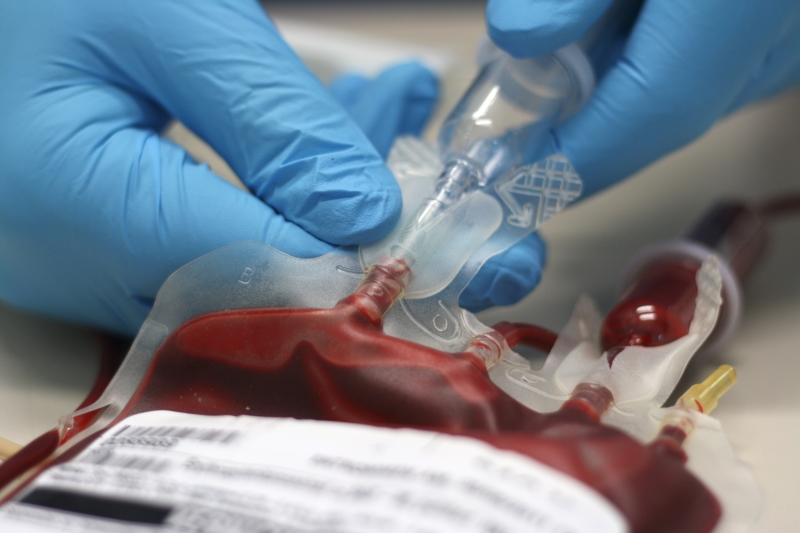Parvovirus B19 (B19V) has been discovered in 1975. The association with a disease was unclear in the first time after the discovery of B19V, but meanwhile, the usually droplet transmitted B19V is known as the infectious agent of the “fifth disease,” a rather harmless children’s illness. But B19V infects erythrocyte progenitor cells and thus, acute B19V infection in patients with a high erythrocyte turnover may lead to a life-threatening aplastic crisis, and acutely infected pregnant women can transmit B19V to their unborn child, resulting in a hydrops fetalis and fetal death.
However, in many adults, B19V infection goes unnoticed and thus many blood donors donate blood despite the infection. The B19V infection does not impair the blood cell counts in healthy blood donors, but after the acute infection with extremely high DNA concentrations exceeding 1010 IU B19V DNA/ml plasma is resolved, B19V DNA persists in the plasma of blood donors at low levels for several years.
That way, many consecutive donations that contain B19V DNA can be taken from a single donor, but the majority of blood products from donors with detectable B19V DNA seem not to be infectious for the recipients from several reasons: first, many recipients had undergone a B19V infection in the past and have formed protective antibodies. Second, B19V DNA concentration in the blood product is often too low to infect the recipient. Third, after the acute infection, the presence of B19V DNA in the donor is accompanied by presumably neutralizing antibodies which are protective also for the recipient of his blood products.
Thus, transfusion-transmitted (TT-) B19V infections are very rarely reported. Moreover, in most blood donors, B19V DNA concentration is below 1,000 IU/ml plasma, and no TT-B19V infections have been found by such low-viremic donations. Cutoff for an assay for B19V DNA blood donor screening should, therefore, be approximately 1,000 IU/ml plasma, if a general screening of blood donors for single donation blood components is considered at all: for the overwhelming majority of transfusion recipients, B19V infection is not relevant as well as for the blood donors. B19V DNA screening of vulnerable patients after transfusion seems to be a more reasonable approach than general blood donor screening.
Front. Med., 01 February 2018
Parvovirus B19: What Is the Relevance in Transfusion Medicine?
Juhl D, Hennig H.



